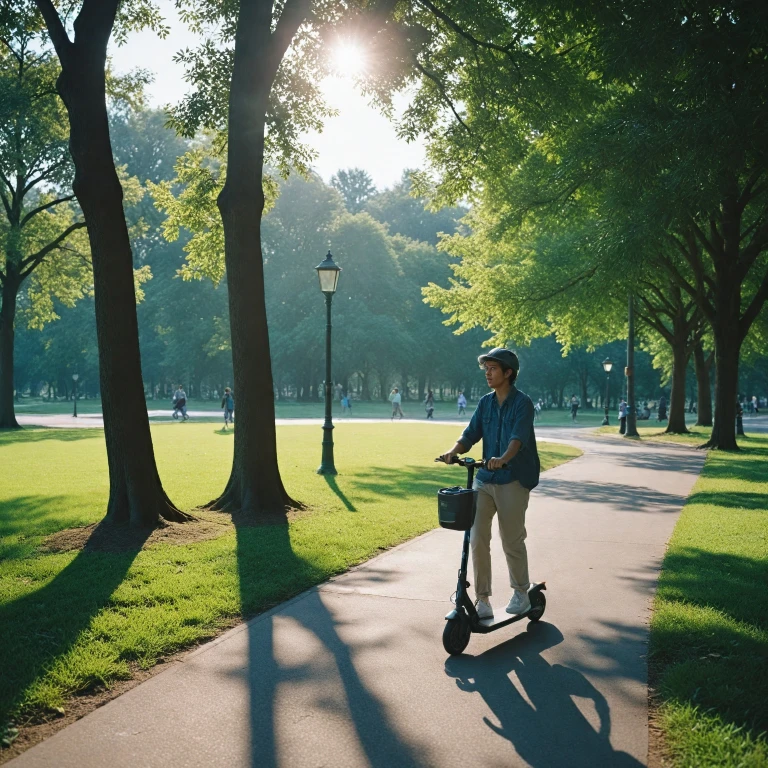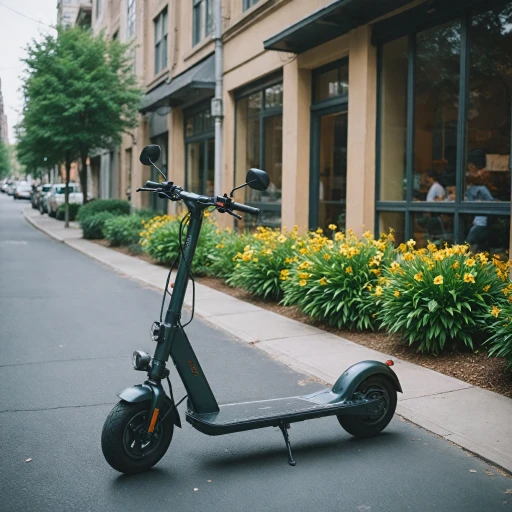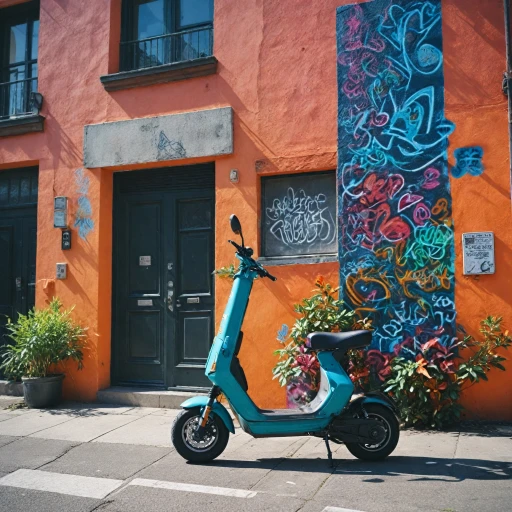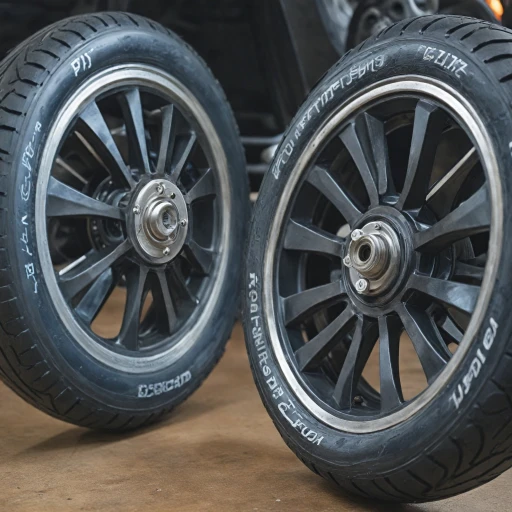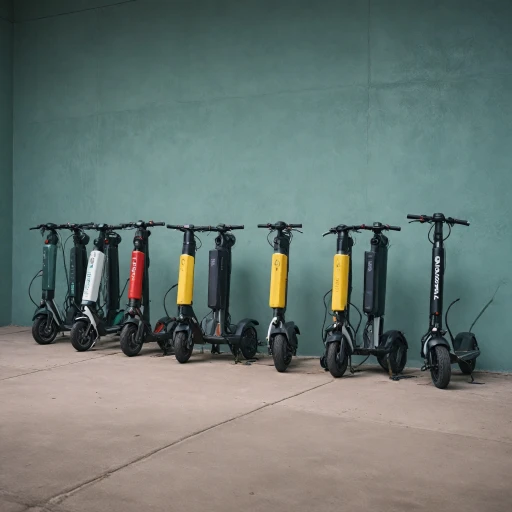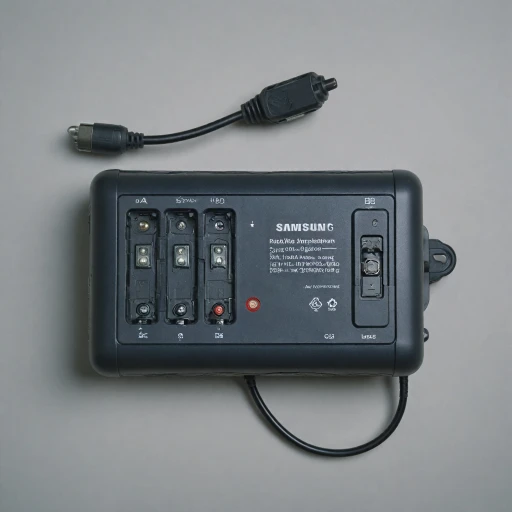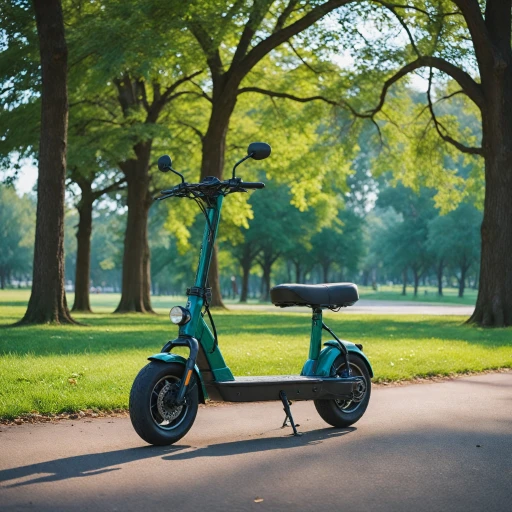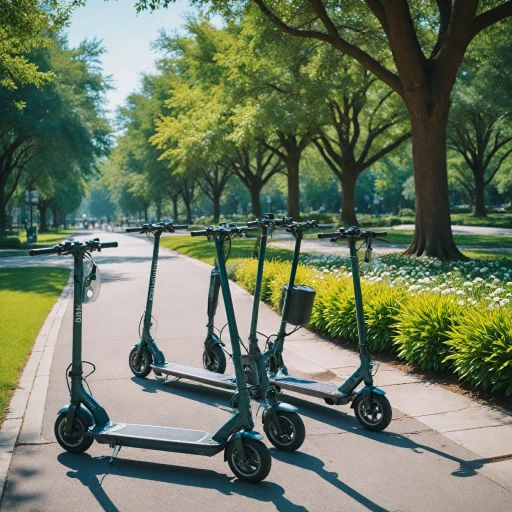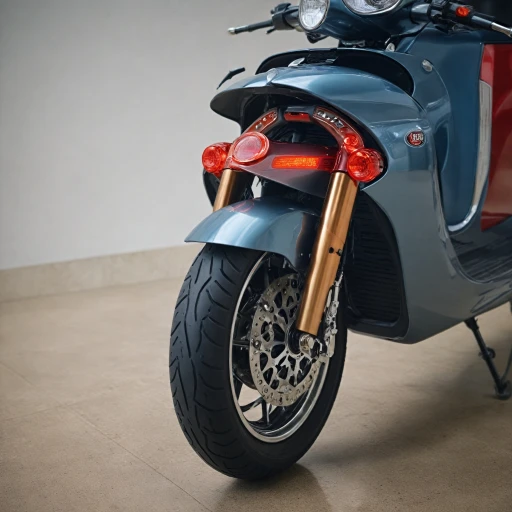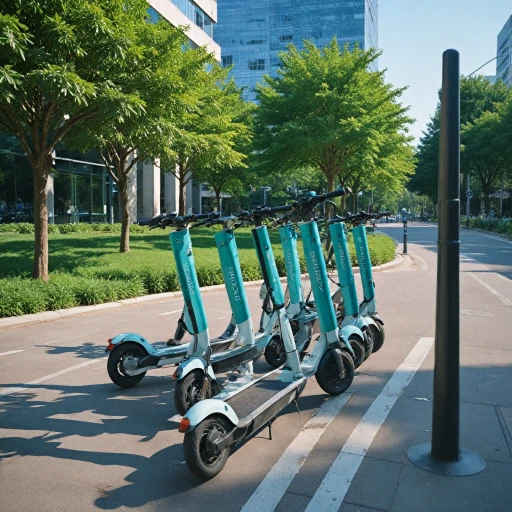Understanding Your Scooter's Battery
Discover the Heart of Your Ride
Understanding the battery in your electric scooter is key to maximizing its performance and longevity. Most modern scooters use lithium-ion batteries, known for their high capacity and efficiency, enabling longer rides. Electric scooters typically feature a charger port allowing easy access for charging. The voltage, usually between 36V to 48V, significantly impacts the power and speed of your ride.
Lithium-ion batteries replaced the bulkier lead-acid variants used several years ago due to their superior energy density and reduced weight. This change not only extends the scooter's range but also cuts down on charging time. Keeping your scooter battery fully charged requires an understanding of its power requirements and cycle. This will ultimately help prevent common charging issues.
When charging your electric scooter, it's crucial to recognize that every battery has a specific charging capacity. Overcharging or using an inappropriate charger can degrade its performance. Thus, choosing the right battery charger is essential. Incorrect chargers may not match the battery's voltage or capacity, adversely affecting battery life, which is also subject to environmental factors such as temperature.
To fully appreciate your electric scooter, familiarize yourself with how these batteries work and be diligent in maintaining proper charging practices to ensure a long-lasting, reliable journey.
Charging Best Practices
Boosting Your Battery's Longevity
Maximizing the life and performance of your electric scooter battery is crucial to ensuring a reliable and efficient ride. Here's how you can optimize your charging practices to enhance your scooter's battery life:
- Use the Right Charger: Ensuring the compatibility of your battery charger with your electric scooter is paramount. Chargers designed for specific battery types, such as lithium-ion or lead acid, can make a significant difference in how well the battery charges. Always verify that your scooter's voltage matches that of the charger.
- Follow the Charging Time Guidelines: Overcharging can degrade your scooter's battery capacity. Pay attention to the manufacturer's recommended charging time and avoid keeping the battery plugged in longer than necessary. This helps maintain the battery's health and prolongs its life.
- Prioritize Partial Charging: Regularly draining the battery fully before charging can lead to a shortened battery life. Instead, consider partial charging which can be less strenuous on the battery cells, thereby maximizing longevity. Ideally, keep your battery's charge between 20% and 80%.
- Charge in Suitable Conditions: Temperature plays a critical role in how your battery charges and holds power. Avoid charging your electric scooter in extreme temperatures, whether too hot or too cold. Maintaining a moderate environment is best for the battery's health and efficiency.
- Monitor the Charging Port and Cable: Regularly inspect your charger port and cable for any signs of wear or damage. This ensures optimal charging and prevents potential hazards. Ensuring that connections are clean and secure will help maintain steady power flow to the battery.
By incorporating these best practices into your routine, you will not only improve the lifespan of your electric scooter battery but also guarantee a more reliable performance over time.
Common Charging Mistakes
Mistakes to Avoid in Scooter Charging Practices
A noteworthy point about electric scooter charging is how certain common mistakes can adversely affect the battery life over time. Understanding these pitfalls will be pivotal in extending the scooter's longevity and performance.
One prevalent mistake is leaving the scooter plugged in after it is fully charged. Whether dealing with lithium ion or lead acid batteries, overcharging can lead to reduced battery capacity and lifespan. It's vital to unplug the charger once the battery light indicates it is fully charged.
Another issue many scooter owners face is the inconsistency in the charger. Using a charger that doesn't match the voltage and capacity specifications of your scooter battery can lead to inefficient charging and potential battery damage over time. It’s essential to use the designated charger or a recommended alternative when charging electric scooters.
Additionally, neglecting to charge the battery in a timely manner can adversely impact its performance. Allowing a scooter battery to sit for extended periods without charge can cause a reduction in its ability to hold power, particularly in the case of lead acid batteries. Regular charging ensures the battery remains in optimal condition.
Lastly, despite the convenience, charging via an inappropriate port or under fluctuating power conditions can lead to diminished battery health. For an extended battery life, ensure a stable power source during charging.
Enhancing the battery’s performance and life is pivotal for any electric vehicle, and avoiding these common charging mistakes is a crucial step. For insights on the influence of environmental factors, consider exploring
the benefits of an IPX5-rated electric scooter.
Choosing the Right Charger
Finding the Perfect Charger for Your Electric Scooter
Choosing the right charger for your electric scooter is crucial for maintaining battery health and prolonging battery life. Understanding the differences between charger types and their specifications can help you make an informed decision.
Each electric scooter is designed to work with a specific voltage range. Using a charger with the correct voltage ensures the battery charges safely and efficiently. Refrain from using a charger with a voltage that is too high or too low as it could damage the electronics and reduce the overall lifespan of your scooter battery.
Chargers come in various amperage ratings. A higher amperage charger can charge your scooter more quickly, but it may not always be suitable for your battery type. Using a charger with the correct amperage is essential to prevent overcharging or undercharging.
Most modern scooters use lithium-ion batteries which require specific chargers designed for these types. Charging a lithium-ion battery with an incompatible charger, such as one meant for lead-acid batteries, can lead to inefficiencies or even damage.
Investing in a high-quality charger can make a significant difference in how long your charge will last and how quickly it reaches a fully charged state. Premium chargers often include built-in protections against overcharging, short circuits, and overheating, ensuring a safer charging experience.
- Original Equipment Manufacturer (OEM) vs Third-Party Chargers:
OEM chargers are designed specifically for your electric scooter model and are generally the safest option. Meanwhile, third-party chargers can be a tempting cost-effective alternative, but they might not always be fully compatible or reliable.
Choosing the right charger not only aids in maintaining optimal battery capacity but also complements the charging best practices discussed previously.
Environmental Factors Affecting Battery Life
Environmental Considerations That Impact Scooter Battery Longevity
Understanding how different environmental factors affect your scooter battery can greatly influence its lifespan. One crucial aspect to consider is the temperature. Like many electronic devices, electric scooters are sensitive to extreme temperatures. Operating and charging your scooter in extreme cold or hot conditions can detrimentally affect the battery's capacity and longevity. Ideally, batteries perform best in mild temperatures, so charging your electric scooter in a controlled indoor setting is recommended.
Another element to look out for is moisture exposure. While some scooter models boast water resistance, consistent exposure to water can still compromise the charger port and other electrical components, potentially affecting the battery. If you're riding in wet conditions, ensure the connectors and ports remain clean and dry.
Moreover, fluctuations in charging voltage due to unstable power sources can also damage the scooter battery over time. It's important to use a stable and reliable power source, preferably a dedicated battery charger tailored for lithium ion or lead acid batteries, depending on your scooter model.
By taking these environmental aspects into account, you can improve your scooter's charging efficiency and extend its battery life span, allowing you to enjoy a smoother, more reliable ride.
Innovations in Battery Technology
Revolutionary Advances in Battery Technology
The electric scooter battery landscape has experienced significant enhancements in recent years. These advancements are largely driven by the quest for more efficient, reliable, and sustainable power solutions. Modern scooters are often equipped with lithium-ion batteries, a popular choice due to their high energy density and long lifespan. Such batteries offer more charge cycles compared to their lead acid counterparts, which were commonly used in earlier models years ago.
While lithium-ion batteries dominate the market, ongoing research is promising even more efficient alternatives. Solid-state batteries, for example, are an emerging technology that promises to revolutionize the power sector. They offer increased capacity and faster charging times while maintaining a lighter weight—factors that can significantly improve electric scooter performance and battery life.
Another innovation is the development of smart battery management systems. These systems help optimize charging by ensuring the battery is neither undercharged nor overcharged, prolonging its life. By continuously monitoring the battery's health, they adjust charging algorithms to suit current conditions, providing an intelligent way to maximize charge retention and efficiency.
Additionally, fast-charging technology is being refined, aiming to reduce the time it takes to fully charge your electric scooter. This improvement is crucial for urban commuters who rely on their scooters for daily travel and can't afford lengthy charging sessions. Fast chargers, which manage higher voltage and power, are gradually becoming more accessible, ensuring your scooter is ready to go with minimal downtime.
As battery technology continues to evolve, the focus remains on enhancing the performance of electric scooters while making them environmentally friendly. These innovations ensure that we're moving toward a future where scooters not only last longer between charges but also contribute to a sustainable urban transport ecosystem.
